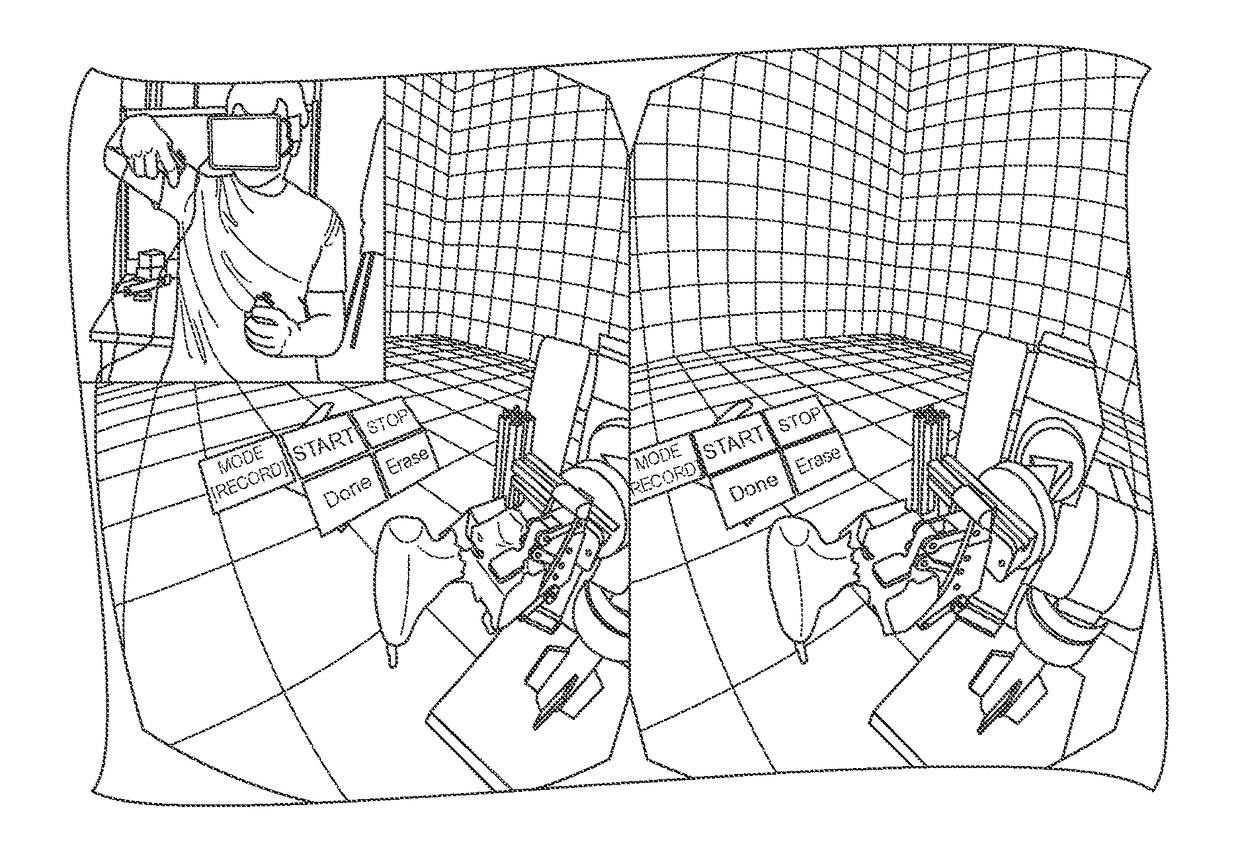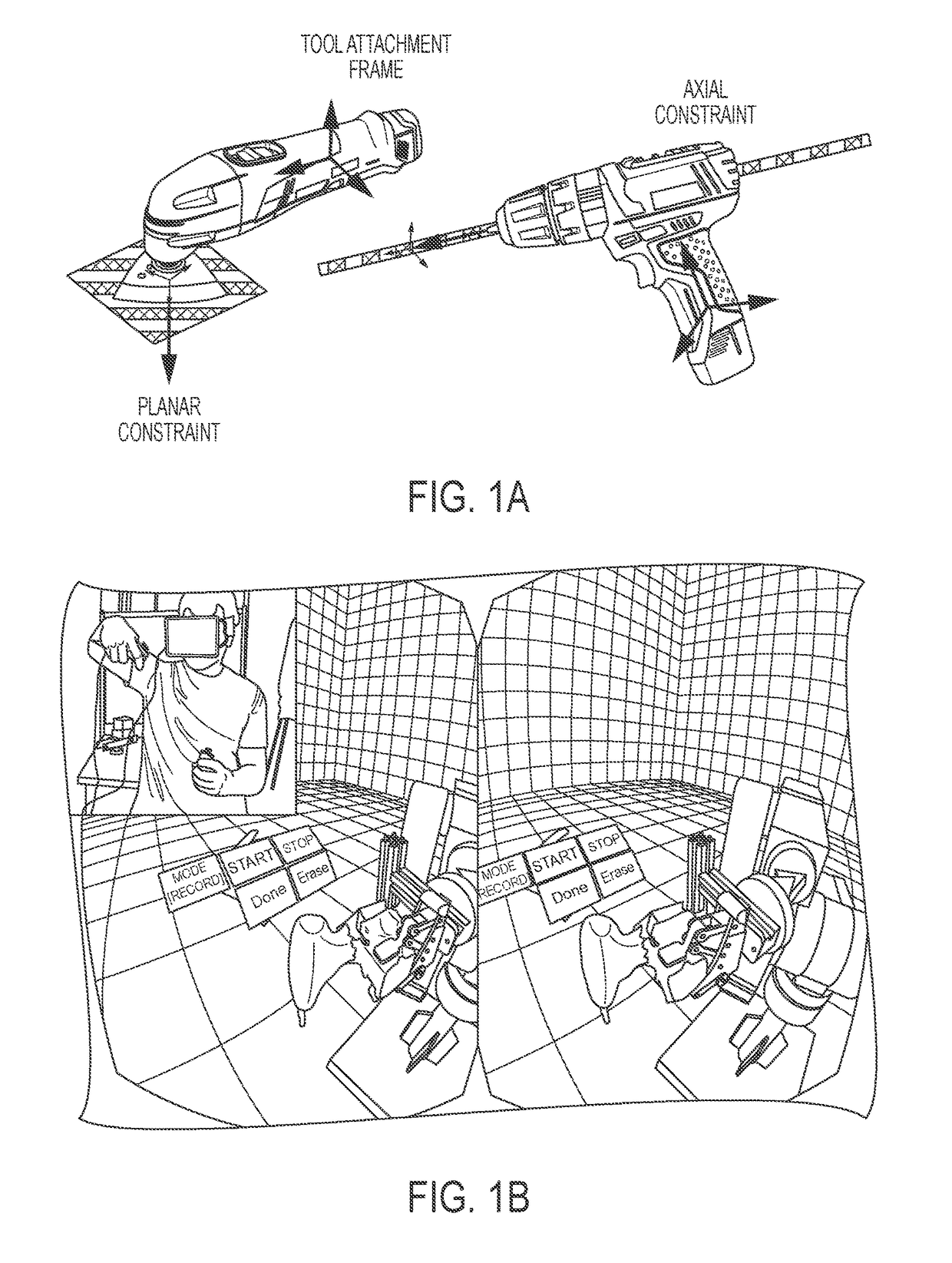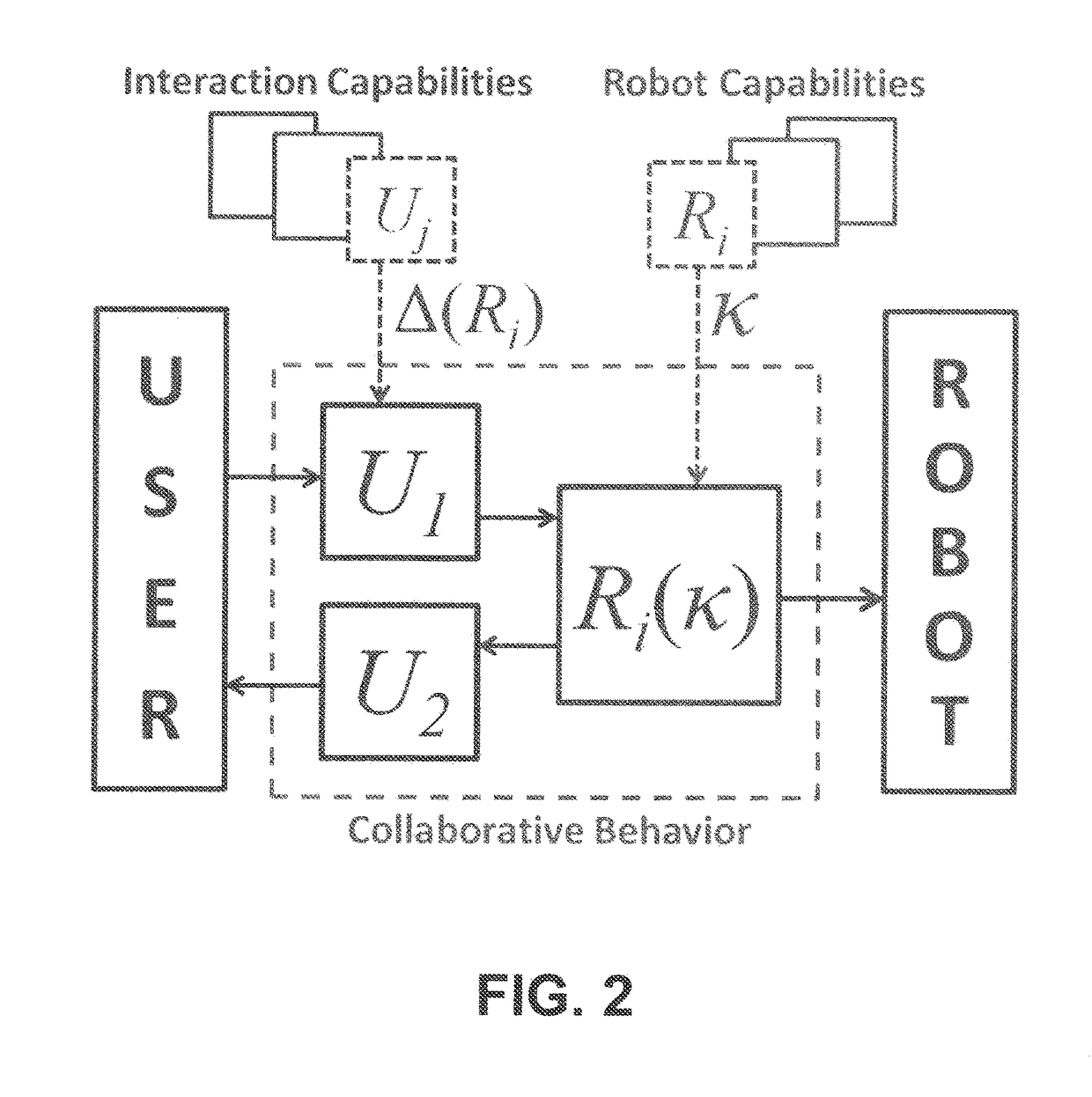System and method for flexible human-machine collaboration
a human-machine collaboration and flexible technology, applied in the field of flexible human-machine collaboration, can solve the problems of not being able to fully automate a task, either performing a task manually or completely automating a task, and achieve the effect of flexible and efficient user-robo
- Summary
- Abstract
- Description
- Claims
- Application Information
AI Technical Summary
Benefits of technology
Problems solved by technology
Method used
Image
Examples
example process
[0129]The collaborative framework can create or load a collaborative behavior to collaboratively perform a sanding task with the user. After creating or loading the collaborative behavior and loading at least one general robot capabilities specified in the collaborative behavior, the collaborative framework can identify that a sander is attached to the robot and instantiate the general robot capability with at least one information kernel that encapsulates parameters associated with a sander. The collaborative framework can then load a tool behavior interaction capability based on a UI requirement of the instantiated robot capability, and provide a tool behavior UI element that lets the user select and / or apply a tool behavior constraint associated with the sander, if not already loaded. For example, the tool behavior interaction capability may not be a capability required by the collaborative behavior. The collaborative framework can then run the tool behavior interaction capabilit...
PUM
 Login to View More
Login to View More Abstract
Description
Claims
Application Information
 Login to View More
Login to View More - R&D
- Intellectual Property
- Life Sciences
- Materials
- Tech Scout
- Unparalleled Data Quality
- Higher Quality Content
- 60% Fewer Hallucinations
Browse by: Latest US Patents, China's latest patents, Technical Efficacy Thesaurus, Application Domain, Technology Topic, Popular Technical Reports.
© 2025 PatSnap. All rights reserved.Legal|Privacy policy|Modern Slavery Act Transparency Statement|Sitemap|About US| Contact US: help@patsnap.com



